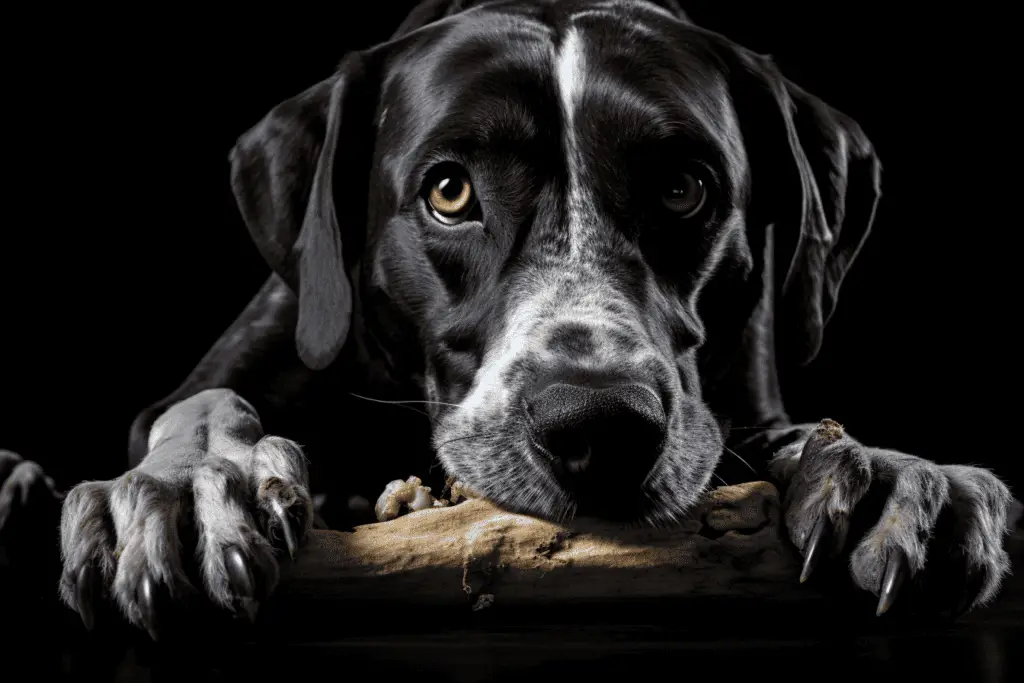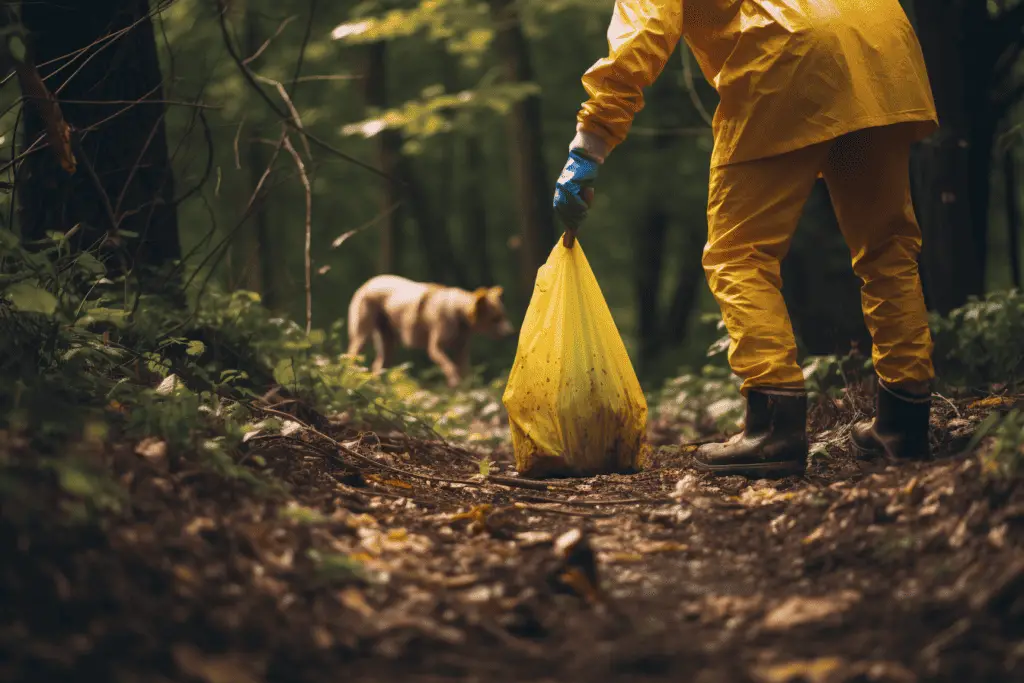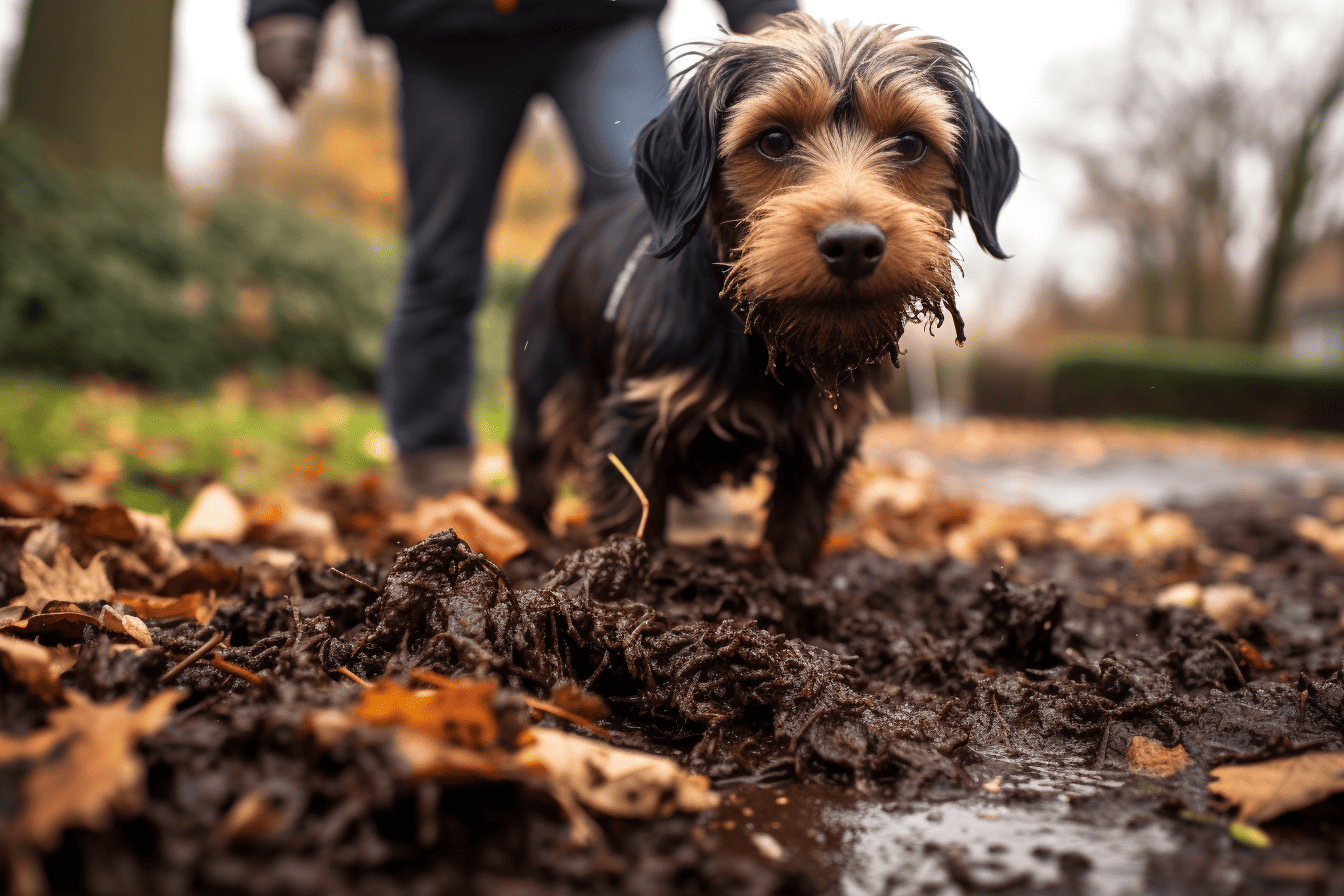Ever wondered what happened to the white dog poop? You know, the one that used to be all over the grass? Well, you’re not alone!
Many dog owners have wondered why their furry friends no longer produce piles of white poop in the yard. To answer your question, we’ll take a look at what happened to the white dog poop and why it’s now turning brown!
Quick Re-cap
White dog poop became a rarity due to changes in dog food and lifestyle, as well as growing awareness of the health risks associated with excessive calcium intake. The disappearance of white dog poop is a testament to our evolving understanding of canine nutrition and the responsible care of our furry companions.
History of White Dog Poop
So where did the white dog poop go? To understand why it disappeared from the streets, we need to look at the story of pet waste. In America’s earliest days, most animals were left in the wild.
But by the mid-1800s, there was a rising desire for pets. At that time, it became fashionable for dogs to be viewed as pampered pets, and for many people, a dog began to represent status and wealth.
It didn’t take long before dog owners wanted their animals to have special foods. By 1898, commercial pet food was available. Unlike humans who were advised to eat less meat because of its high fat content, dogs could eat whatever they liked.
Dog Food Changed By the 1900s… and So Did Poop
Some companies even promoted canned food with slogans like “The chicken is mostly breast.” (Of course, back then no one knew about cancer or cholesterol.) Since protein is needed for muscle growth, dogs naturally got bigger over time-and so did their poop.
In fact, dog owners quickly became accustomed to a daily cleanup job because of all that white dog poop on their lawns and sidewalks. There was so much waste in suburban areas that it created quite a stink!
But then something changed. Dogs started living indoors more often, rather than outdoors 24/7. With fewer hours spent outdoors running around, dogs simply didn’t produce as much waste as they once did.
At first, people tried different things to reduce odour-including perfumes and other chemicals-but nothing worked for long. Then pet food companies figured out how to put charcoal into kibble (which is basically processed food) in order to soak up extra moisture from pets’ stools.
Nowadays, dog poop comes in a variety of colours: brown, green, black, yellow, and even pink! So next time you see a white dog poop on your lawn or sidewalk, just think back to when it was more common! Thanks to companies like Petco that make cleaning up after our dogs easier than ever before.

Where Did The White Dog Poop Go?
Dog owners across America often found themselves face-to-face with a mystery: Where did all of that white dog poop go? In fact, there was no shortage of it!
But what many didn’t realize is that in some cases, that wasn’t so-called white dog poop at all. Instead, they were actually seeing pieces of undigested bones normally from chicken and fish bones that had somehow made their way into dogs’ stomachs during mealtime.
As strange as it may sound, new research shows that ingesting too much calcium can be just as dangerous for a dog’s health as not getting enough. The main concern is when dogs consume large amounts of bones with their food.
This can lead to conditions like osteoporosis or kidney stones and even death in some cases. So If you’re wondering where it all went, basically people stopped feeding their pets calcium-rich food scraps from the table.
If you’re worried about your pet eating chicken or fish bones, keep an eye on them during mealtime and remove any pieces they accidentally swallow. If you notice your pet having trouble breathing or losing weight despite eating normally, call your vet immediately!
In some cases, removing a bone fragment can be as simple as performing a brief surgery-but it’s important to catch it early to avoid potentially deadly complications.
Watch Your Dog’s Calcium Levels
It’s also worth noting that there are other risks involved with feeding dogs too much calcium in their diet. In rare cases, dogs can develop hypercalcemia if they consume more than 3-4% of their total daily calories from calcium (the equivalent of one large egg).
This condition is typically associated with bone cancer or kidney stones in humans even if your dog isn’t eating large amounts of bone fragments every day, you should still monitor their calcium intake just to be safe.
With all that said, there are plenty of benefits to feeding dogs a diet rich in calcium. As we mentioned earlier, many pet owners add chicken and fish bones to their pets’ food because they believe it will help keep them healthy.
And while it’s true that dogs need certain minerals like magnesium and phosphorus to maintain strong bones and muscles, they also need vitamin D (which helps them absorb these nutrients). In fact, some veterinarians suggest that dogs may require more vitamin D than humans do!
But not all foods provide enough vitamin D for our canine companions…which means we have to find creative ways to supplement our dogs’ diets when necessary. And that’s where eggs come into play!
Why does my dog’s poop turn white?
Too much calcium in your dog’s diet may make his waste a chalky white colour. It’s important to remember that many things can affect your dog’s stool, from illness to stress to how much exercise he gets. If you’re concerned about any change in your dog’s elimination schedule, you should always consult your veterinarian right away.
That said, it may not be anything serious pup could just have an unusually high intake of calcium-rich foods. (For instance, if he wolfed down a container of Tums or chewed on some antlers after dinner.) In these cases, it should stop once he gets used to having those extra calories in his diet. (If you notice green poop or diarrhoea along with his newfound whiteness though, see a vet.)
Have you noticed anything similar happening with your own dogs?
You may have read about dogs eating their own dog poop and wondered why they would do such a thing. Yes, I know it’s gross to imagine, but it’s also more common than you think.
There are various reasons your dog might decide to eat her own poops: some dogs do it for nutrients; others do it as a way of saying, Hey! Something is wrong with my food!
Whatever the reason, it is natural and normal behaviour in many cases. If your dog has white faeces on occasion or regularly – there is likely nothing to worry about.

Final Words
In conclusion, the mystery of white dog poop has been unravelled, and it’s a fascinating journey through the history of pet ownership and canine diets. Once a common sight on lawns and sidewalks, the disappearance of white dog poop can be attributed to changes in dog food, lifestyle, and a better understanding of the potential health risks associated with calcium-rich foods.
In the past, when dogs were predominantly outdoor animals and consumed a diet that included more bones, their waste often appeared white due to undigested bone fragments. However, as dogs began living indoors more often and commercial pet food companies adjusted their products to reduce waste and odor, the days of white dog poop gradually faded into history.
Furthermore, it’s essential for dog owners to be aware of the potential risks associated with excessive calcium intake, which can lead to health issues like osteoporosis and kidney stones. Monitoring your pet’s calcium levels, being cautious with chicken or fish bones, and promptly addressing any health concerns with a veterinarian are crucial steps in ensuring your dog’s well-being.
While occasional white feces in your dog’s waste may not be a cause for concern, it’s essential to observe any consistent changes in your pet’s elimination habits and consult a veterinarian if needed. Additionally, understanding why dogs might eat their own feces, a behavior that may seem repulsive but is often driven by natural instincts, can help dog owners better care for their furry companions.
As the landscape of pet ownership continues to evolve, so too does our understanding of canine nutrition and health. So, the next time you stumble upon a colorful variety of dog poop in your yard, you can appreciate the journey of canine dietary evolution that led to this transformation, with a newfound awareness of the importance of responsible pet care.

